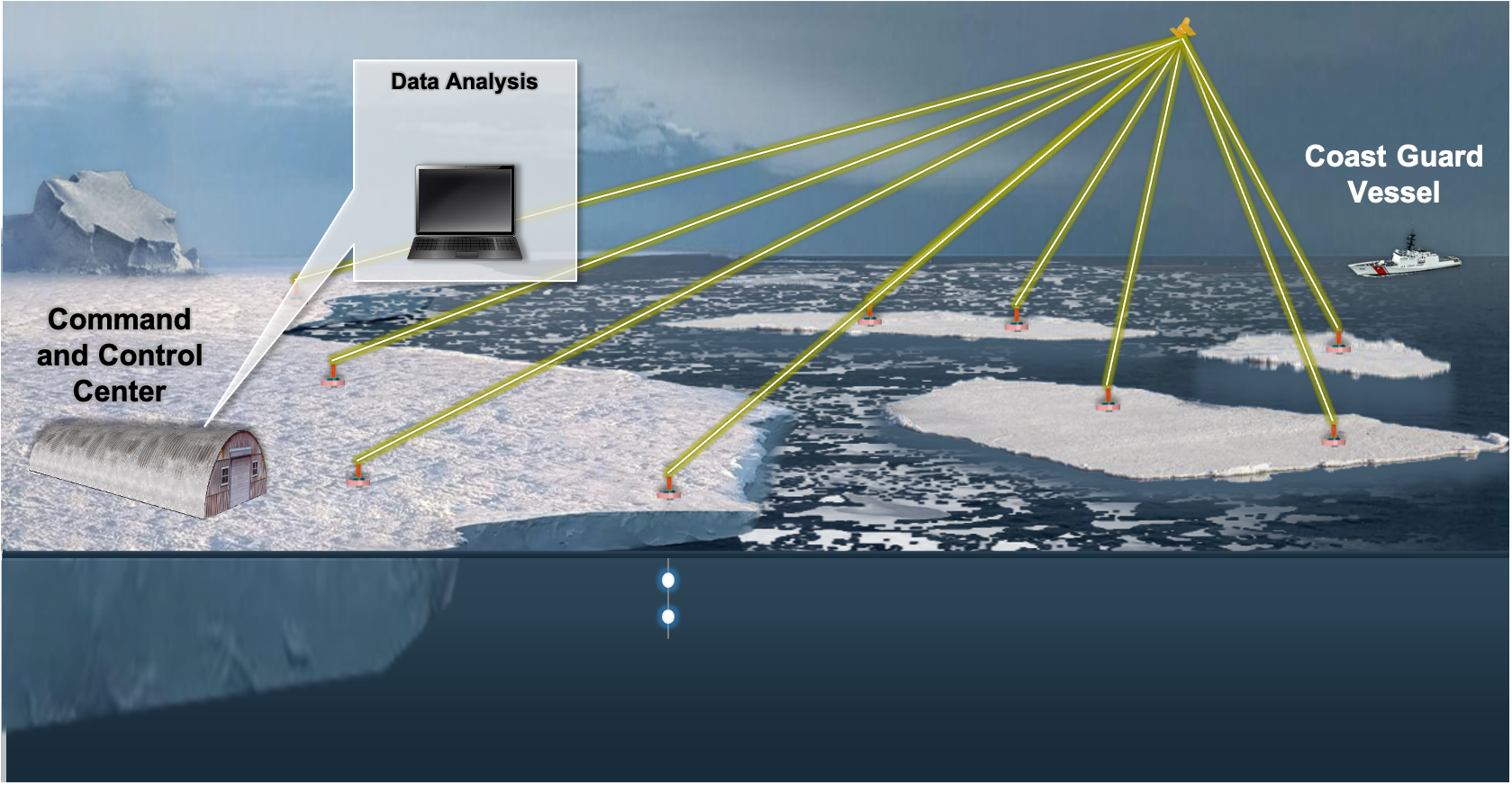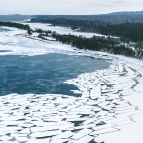Arctic Climate Change Detection Network

The effects of global climate change are amplified in the Arctic, where the significant loss of sea ice is among the most observable signals of change in the climate system. We are developing a sensor network for the Arctic that will use seismography to detect ice fracturing events linked to Arctic climate change. The network will also measure salinity, temperature, and sound speed as a function of depth in the water column. We intend to correlate ice fractures and the environmental measurements with other records of sea ice, such as satellite imagery.
As a first step, we are building a low-cost sensing package capable of identifying fractures in Arctic sea ice using low-cost seismometers. We deployed a prototype sensor package in the Arctic region of Prudhoe Bay, Alaska, and the Beaufort Sea, as part of the U.S. Navy's ICEX training exercise, and tested multiple environmental sensors to collect data for a proof of concept. We will use this data to build algorithms that can automatically detect ice events such as fractures as well as changes in the environment that may contribute to these fractures. Our goal is to build a sufficient understanding to enable sustainable, distributed, and real-time monitoring of sea ice breakup in a rapidly changing Arctic climate system. This effort will eventually involve the U.S. Coast Guard, who will deploy our novel sensor package at the marginal ice zone, which is the region where sea ice transitions to open water.


